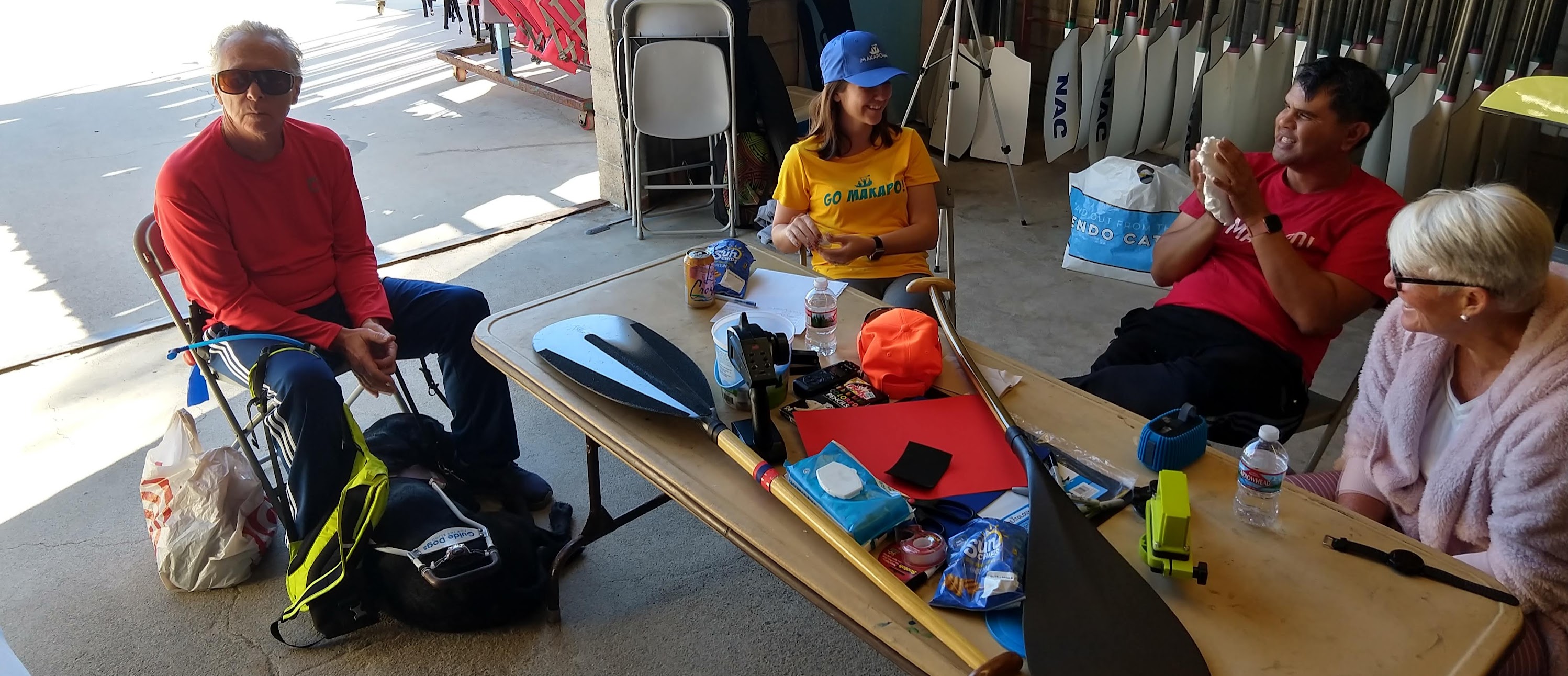CoOP Research

Inclusive Technology for Equitable Paddling
The CoOP platform represents a unique approach to assistive technology, combining community-driven design with multimodal interaction principles. By addressing key challenges in accessibility, such as overreliance on auditory instructions and inefficiencies in verbal navigation, CoOP demonstrates how assistive technologies can foster equitable participation in recreational and competitive activities.
Grounded in Activity Theory, this work emphasizes the interplay between tools, tasks, and users, framing CoOP as an extension of natural human activity. The system's design and implementation reflect the needs, challenges, and aspirations of its intended users, particularly blind paddlers.
CoOP's Innovations: Multimodal Interaction by Design
Beyond Verbal Steering: The Role of Auditory Freedom
Traditional verbal steering relies on sighted guides providing constant instructions like "left" or "right" to blind paddlers. While effective in basic navigation, this approach creates several challenges:
- Auditory Overload: Constant verbal input overwhelms the paddler’s auditory modality, limiting their ability to engage with environmental sounds like wave patterns or the rhythm of paddling.
- Inefficiency: Delays in communication often result in overcorrections, producing an “S-pattern” trajectory that is both exhausting and inefficient.
Field observations highlighted these issues during early trials with blind paddlers. One participant shared,
“The constant commands make it feel like I’m following orders, not paddling my own canoe.”
CoOP addresses these limitations by replacing verbal commands with multimodal feedback, including a combination of:
- Haptic Feedback: Subtle vibrations signaling directional adjustments.
- Environmental Awareness: Freeing the auditory channel for natural engagement with the sounds of the water and coaching feedback.
In trials conducted during long-distance paddling sessions, blind paddlers reported feeling a greater sense of autonomy and immersion. Quantitative data supported this, with navigation errors decreasing significantly compared to sessions using verbal steering alone.
Improving Navigation Efficiency
During early testing, verbal steering frequently led to zigzagging courses due to delayed or imprecise feedback. For example, in a trial on a 2-mile open-water course, paddlers using verbal steering experienced average deviations of 15–20 degrees from their intended trajectory. This inefficiency required constant corrections, leading to fatigue and frustration.
With CoOP, paddlers maintained an average deviation of less than 5 degrees, reducing overcorrections and enabling smoother, more efficient navigation. One coach remarked, “The difference is night and day—this system doesn’t just make steering easier; it transforms the entire paddling experience.”
Image
Fit

Collaborative Design: A Public and Iterative Process
Community-Driven Innovation
The development of CoOP relied heavily on public co-design, involving blind paddlers, sighted guides, and coaches at every stage. Through iterative testing and feedback sessions, the system evolved to address real-world challenges identified by its users.
Example: Refining Feedback Modalities
Initial prototypes relied on a single vibration pattern for steering cues, which led to confusion during testing. Feedback from paddlers highlighted the need for more distinct signals. The design was adjusted to include two patterns: a short pulse for left turns and a long pulse for right turns. This modification resulted in a 90% reduction in steering errors during subsequent trials.
Example: Testing Under Real-World Conditions
Field tests conducted in diverse environments, from calm harbors to open ocean courses, provided critical insights into the system’s performance. For instance, trials in rougher waters revealed the need for enhanced signal strength, prompting hardware adjustments that improved reliability under challenging conditions.
Broader Implications
Redefining Sensory Engagement
CoOP highlights the importance of respecting existing sensory modalities in assistive design. By freeing the auditory channel from constant navigation commands, the system enables blind paddlers to remain immersed in the natural soundscape while receiving effective guidance.
Fostering Equity in Shared Activities
CoOP redefines team dynamics by enabling blind paddlers to steer independently. This shift reduces reliance on sighted guides for constant intervention, fostering a more balanced and equitable partnership.
A Framework for Assistive Design
The principles underpinning CoOP’s development provide a roadmap for future innovations in assistive technology:
- Participatory Design: Engaging users as co-creators ensures that technology aligns with their needs and values.
- Multimodal Interaction: Leveraging multiple sensory channels creates systems that are intuitive and adaptable to diverse contexts.
- Activity-Centered Design: Framing technology as an extension of natural human activities emphasizes usability and meaningful engagement.
Research Contributions
- Empirical Insights: Field data demonstrates CoOP’s ability to improve navigation efficiency and reduce auditory overload.
- Collaborative Methodology: The project highlights the value of co-design in developing systems that reflect the lived experiences of their users.
- Scalable Principles: CoOP’s design framework offers guidance for creating equitable assistive technologies in other domains.